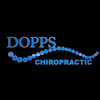Forward Head Posture in Children: Spotting the Signs and Taking Action
- Dr. Rory Dopps

- Mar 29, 2024
- 2 min read
Updated: Apr 18, 2024

In the digital age, children are increasingly developing a prevalent postural issue known as forward head posture (FHP), which can lead to a range of health complications if left unchecked. Recognizing the early signs of FHP and understanding its dangers is crucial for safeguarding our children's health. One such sign is a child constantly feeling the need to stretch, crack, or pop their neck, which can indicate discomfort or strain in the cervical spine due to improper alignment.
Early Indicators of Forward Head Posture
Aside from the habit of neck popping, other physical manifestations of FHP include a chin that perpetually juts out or a neck that appears flat from the side, losing its natural curve. This can lead to the formation of a noticeable hump at the top of the shoulders, as the body attempts to compensate for the imbalance. These symptoms are often accompanied by frequent complaints of neck or shoulder pain, headaches, or even changes in mood and behavior due to discomfort.
The Long-Term Implications of FHP
FHP can significantly impact a child's health and development. The neck strain associated with this condition can interfere with the nervous system function, potentially affecting everything from sinus function to mental clarity. Moreover, FHP can impede proper growth patterns, leading to skeletal and muscular imbalances that might persist into adulthood.
The physical repercussions of FHP, such as chronic pain, increased susceptibility to injury, and impaired respiratory function, are compounded by the potential for reduced self-esteem and decreased physical activity. These can have far-reaching effects on a child's social interactions and overall quality of life.
Proactive Parental Measures
Parents play a vital role in helping their children correct FHP. Encourage breaks from screens to alleviate neck strain, set up child-friendly workspaces that promote good posture, and engage kids in physical activities that strengthen their back and neck muscles. Educating children on proper posture—aligning ears over shoulders and keeping the back straight—is also fundamental.
Chiropractic Care: A Path to Correction
For children exhibiting signs of FHP, such as habitual neck stretching, a flattened cervical spine, or shoulder protrusions, seeking chiropractic care is a critical step towards correction. Chiropractic professionals can perform comprehensive evaluations, identifying subluxations or misalignments in the spine that may contribute to FHP. Through targeted adjustments and specific exercises, chiropractors can help realign the spine, alleviate discomfort, and promote optimal nervous system function.
Ensuring Healthy Growth and Posture
The prevalence of forward head posture in children is a growing concern, but with early detection and appropriate intervention, it can be managed effectively. Observing for signs like constant neck popping, a flat neck profile, and shoulder humps can prompt timely action to address FHP. Taking proactive steps to correct a child's posture is not just about improving their appearance; it's about ensuring their nervous system functions optimally, fostering healthy growth, and contributing to their overall well-being.
If you've noticed these signs in your child, don't hesitate to take action. Book an appointment with a pediatric chiropractor to assess your child's spinal health and posture. Visit doppskc.com today to schedule a consultation and take the first step towards a healthier posture and a brighter future for your child. Together, we can guide our children towards a path of optimal health and confident growth.




Comments